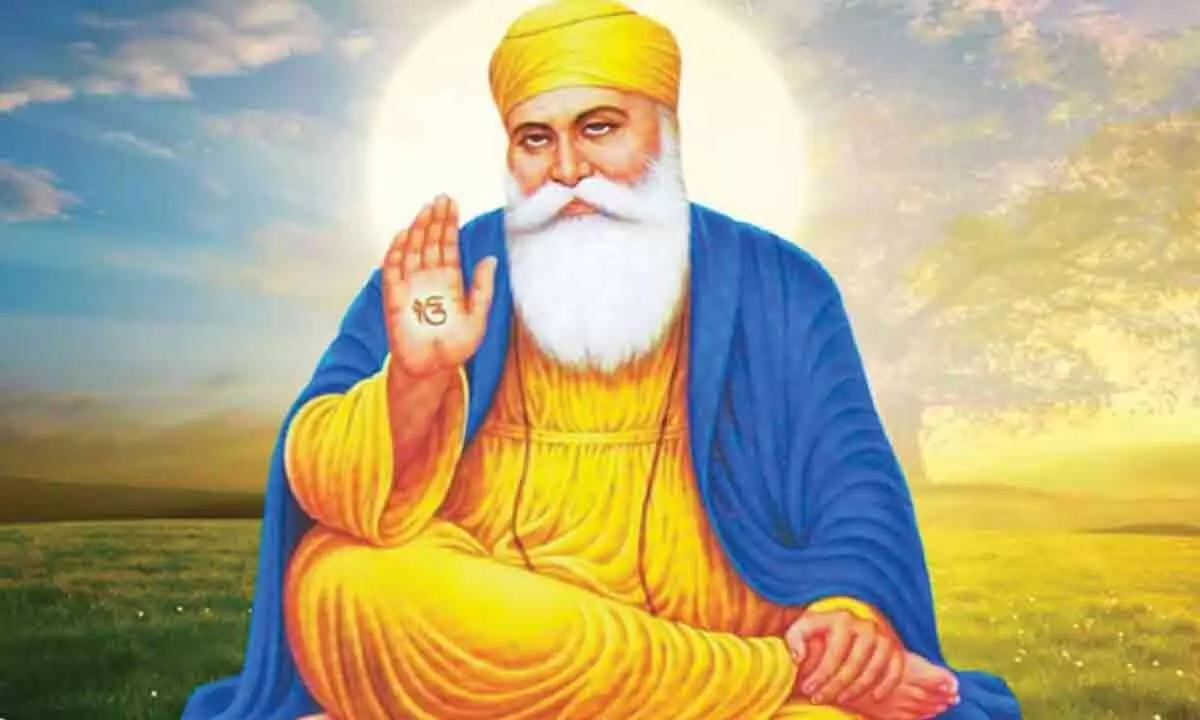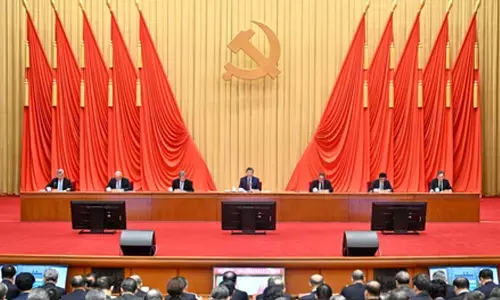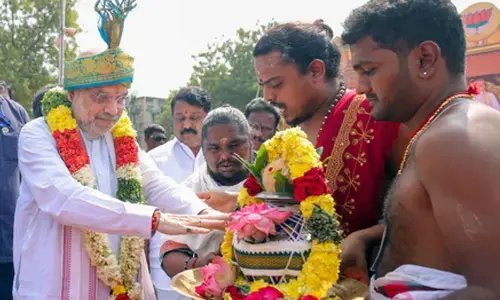Remembering Guru Nanak

Guru Nanak Jayanti was celebrated this week. It was a low-key event in the bustle of elections. The advent of Sikhism was a great moment in history. We cannot say whether Guru Nanak wanted to create a new religion or whether his idea was to create a dedicated team of people to protect dharma, but several historical twists made the followers to take it as a separate religion. The nation’s indebtedness is forever great for all the sacrifices made by the Sikh gurus
Guru Nanak Jayanti was celebrated this week. It was a low-key event in the bustle of elections. The advent of Sikhism was a great moment in history. We cannot say whether Guru Nanak wanted to create a new religion or whether his idea was to create a dedicated team of people to protect dharma, but several historical twists made the followers to take it as a separate religion. The nation’s indebtedness is forever great for all the sacrifices made by the Sikh gurus.
Do we know that Sikh doctrine is close to Vedanta? We are aware of the Sikhs as the valorous regiments in our army, but we have not known much about the religion. Of late, our interest was awakened by the khalistani agitators in other countries and many interesting aspects came out in the social media. The doctrine of Sikhs, told in Guru Granth Sahib, is almost identical with the non-dual Vedanta. The Sikhs have a mula-mantra like the Hindus have the Gayatri mantra and the two are very close to each other. It was a revelation for me to know that the mantra has captured the essence of the Upanishads in defining the Supreme Reality.
The very opening lines of Granth sahib say that the individuated consciousness, jiva, gets separated from Brahman due to maya. By following the order, hukm, of the lord, the jiva attains the Brhaman. This is the statement in Vedanta too. The moola-mantra reads ‘Ik Omkar, sat-nam, karta purakh, nirbhay, nirvair, akala murat, ajuni, saibham, guru-prasad’.
It starts with Om, the sacred syllable. As in Vedanta it is a combination of three syllables, a, u, and m and it refers to Brahman. The next word is sat-nam, which refers to existence. Brahman is existence, not emptiness, as the Buddhists said. Karta means that he is the creator, who is purakh (Sanskrit, purusha), the all-pervading entity. Purakh means one who indwells all. Nirbhay – brahman is the only thing which exists. Fear or competition arises only when there is a second one. As there is no second one apart from Brahman, it is called nirbhay, as in Vedanta. Nirvair – no enmity with anything. It is again for the same reason. What all we call as good, bad or ugly, all manifest in the same Brahman. Brahman is said not to have any likes or dislikes (as in Vedanta).
It is beyond time, and hence the word akaal- murat. What we call the Supreme transcends time, transcends creation. Hence, we hear the greeting ‘sat shri, akaal’, referring to the infinite, timeless, existence which manifests gloriously.
It is also beyond birth and death, as it is beyond time. Hence it is called ajuni (Sanskrit, ayoni, not born from any womb, no other cause from which It has evolved). To make it clearer, the next word is saibham (Sanskrit, swayam-bhu, self-evident). There is no other agency which causes it.
Like in Vedanta, it can be known only through a competent guru. Brahman is not a matter for self-study because there are two aspects in a spiritual journey. One is knowledge and the other is a host of qualities like dispassion, absence of impurities (hate, greed, etc.,) in mind and such. The guru is like a trainer who watches the spiritual progress of the student. Hence the importance of guru in both traditions.
Guru Nanak was a great reformer whose followers were drawn from all sections of society, including depressed classes, and he trained them uniformly. It is surprising how his movement did not spread to the entire land but was confined to a small part of India. Indians have to know more about the great doctrine, love and revere the great Sikh leaders, whose path is a great example for social harmony.
(The writer is a former DGP, Andhra Pradesh)














